The


The
On February 22, the Wuxi Museum officially opened the exhibition "Su Rhyme in Numbers: A Major Exhibition at Your Doorstep," showcasing more than 20 precious cultural relics from the Nanjing Museum, the Yangzhou China Grand Canal Museum, the Suzhou Museum, and the Wuxi Museum.
Although this exhibition only lasts 10 days, making it a true "flash exhibition," the exhibits are significant. The most noteworthy exhibit is the Five Dynasties' "Chive Flower Post" by Yang Ningshi.
According to The Paper, the exhibition "Su Rhyme in Numbers: A Major Exhibition at Your Doorstep" is divided into four sections: "Seeing Objects," "Seeing Exhibitions," "Witnessing," and "Meeting." It showcases more than 20 precious cultural relics from the Nanjing Museum, the Yangzhou China Grand Canal Museum, the Suzhou Museum, and the Wuxi Museum, including the Five Dynasties' "Chive Flower Post," a Qing Dynasty Qianlong pink-colored jade censer with dragon-shaped handles, an Eastern Han Dynasty gilt bronze ox lamp, a Qing Dynasty mid-period cloisonné enamel gilt incense burner with auspicious patterns, and a Qing Dynasty white jade "Fisherman's Joy" boat-shaped ornament, among other national-level cultural relics. This exhibition uses a format of "digital exhibition + precious cultural relics + cultural and creative art," allowing the public to see these items without traveling far.
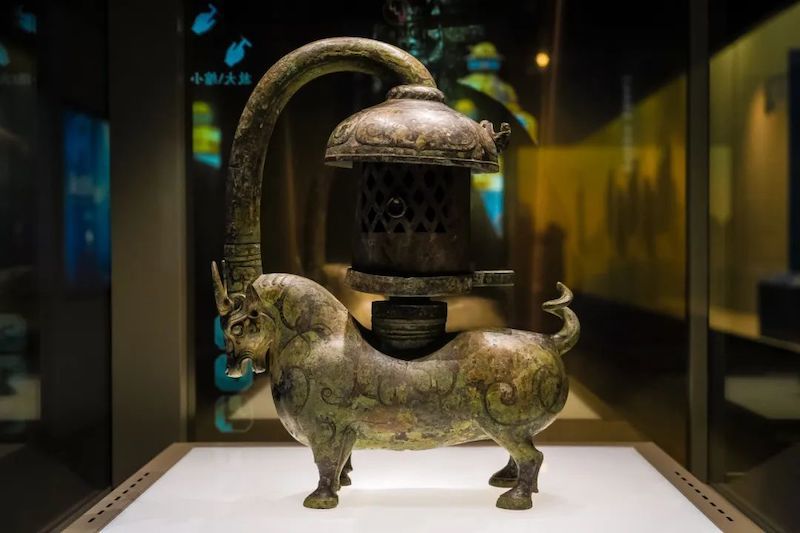
Exhibition scene Wuxi Museum Photo
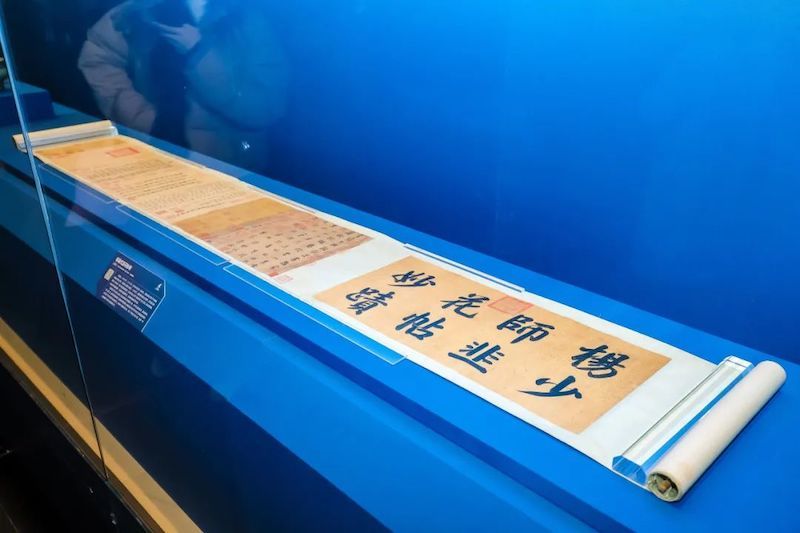
"Chive Flower Post" exhibition scene Wuxi Museum Photo
According to information released by the organizer, exhibits from the Nanjing Museum include a Qing Dynasty Qianlong pink-colored jade censer with dragon-shaped handles, an Eastern Han Dynasty gilt bronze ox lamp, an Eastern Jin Dynasty Yue kiln celadon goat-shaped candlestick, a Southern Dynasty celadon porcelain spittoon, a Five Dynasties and Ten Kingdoms Southern Tang Dynasty standing female pottery figure, a Liangzhu Culture jade cong, a Five Dynasties and Ten Kingdoms Southern Tang Dynasty male pottery figure holding a tablet, a late Qing Dynasty tin wok, and a Dawenkou Culture painted pottery bowl.
Artifacts from the Wuxi Museum include a Southern Song Dynasty Longquan kiln celadon li-style furnace, a Yuan Dynasty gold cup with "Deng Wansilang" inscription and a pattern of continuous sons, a Yuan Dynasty gold belt buckle with a tapir pattern and "Chenpuzao" inscription, the Five Dynasties' Yang Ningshi's "Chive Flower Post," and a Tang Dynasty jade pendant with a deer pattern. It is understood that to reflect the humanistic characteristics of Wuxi, the artifacts from the Wuxi Museum in this exhibition were selected by online voting.
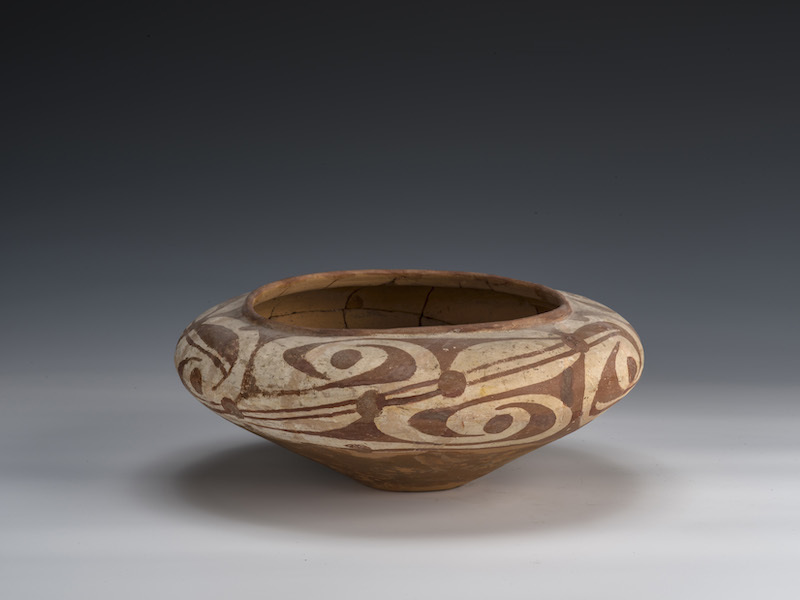
Dawenkou Culture painted pottery bowl
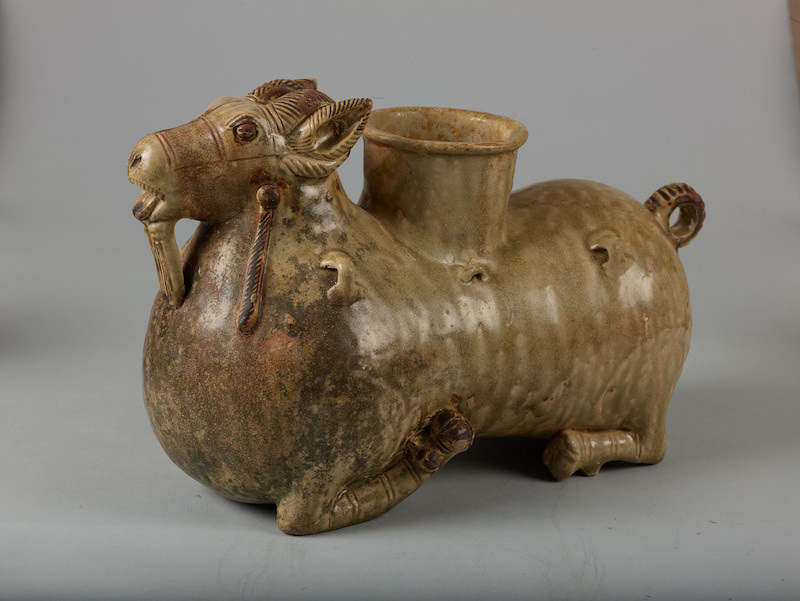
Eastern Jin Dynasty Yue kiln celadon goat-shaped candlestick

Qing Dynasty Gu Jue bamboo carving of figures small brush holder
Exhibits from the Suzhou Museum include a Ming Dynasty jade cup with taotie pattern, a Qing Dynasty Gu Jue bamboo carving of figures small brush holder, a Qing Dynasty Duan stone blue and white patterned inkstone, a Qing Dynasty ivory carving of the Seven Sages of the Bamboo Forest brush holder, a Qing Dynasty carved red lacquer flower and bird armrest, and an inlaid shell polished lacquer scripture box.
Exhibits from the China Grand Canal Museum include a Qing Dynasty cloisonné enamel gilt incense burner with auspicious patterns, a Qing Dynasty Jingtai style cloisonné enamel lotus pedestal with eight auspicious symbols fish ear furnace, a Qing Dynasty white jade "Fisherman's Joy" boat-shaped ornament, a Longquan kiln celadon plate with carved lotus petal pattern, and a three-legged furnace with blue and white eight auspicious symbols pattern by Akdang A.
Among them, the most noteworthy is undoubtedly the calligraphy treasure from the Wuxi Museum, the Five Dynasties' Yang Ningshi's "Chive Flower Post." It is understood that it has been 7 years since the last time this artifact was exhibited.
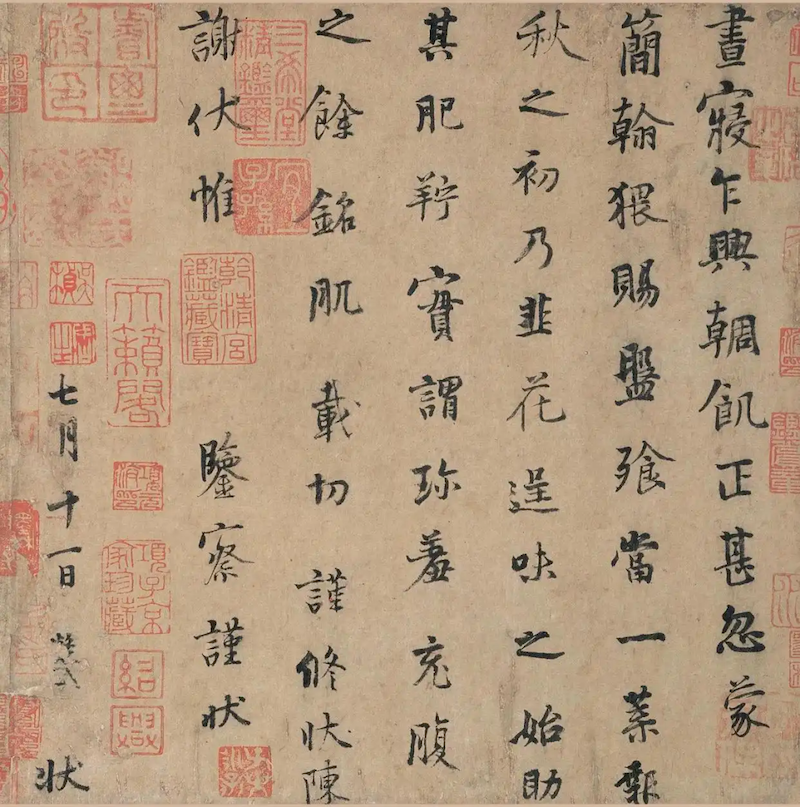
Five Dynasties' Yang Ningshi's "Chive Flower Post"
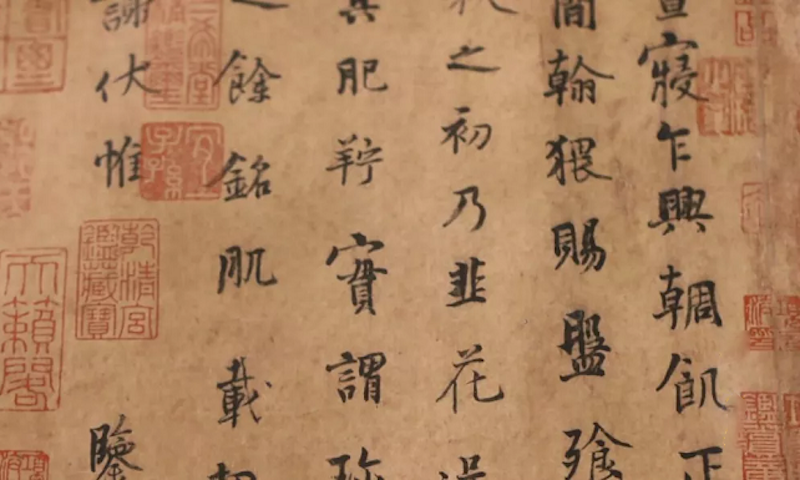
Five Dynasties' Yang Ningshi's "Chive Flower Post"
"Chive Flower Post" is a running script work on hemp paper, 26 cm high and 28 cm wide. It is a representative work of Yang Ningshi. It was written in a few lines by Yang Ningshi, a calligrapher of the Five Dynasties, after waking up from a nap, his stomach very hungry, after having a delicious meal, to thank a friend for the gift of delicious chive flowers. There are seven lines and sixty-three characters. The whole text is full of the author's relaxed, joyful, and high-spirited enthusiasm, and his relaxed and leisurely mood is clearly expressed. His calligraphy is even more amazing. Yang Ningshi was "skilled in poetry and calligraphy." This casual note has become an invaluable masterpiece in the history of calligraphy.
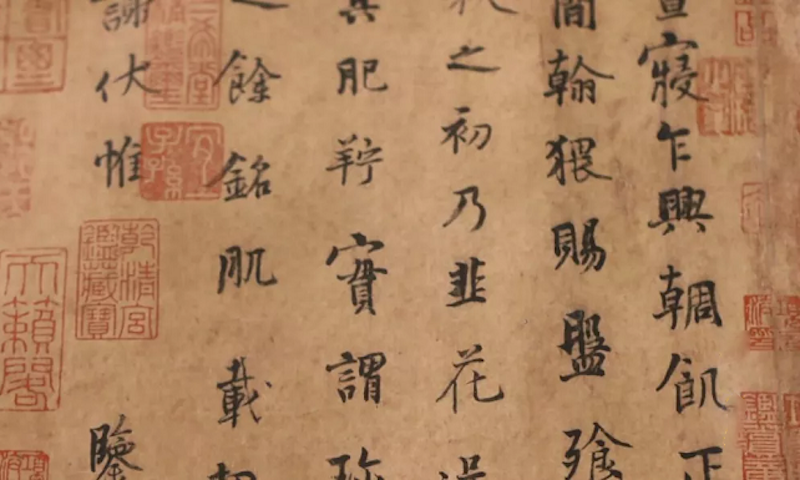
Five Dynasties' Yang Ningshi's "Chive Flower Post"
Yang Ningshi introduced contradictions into his calligraphy creation and achieved unprecedented artistic harmony and unity. This is not only due to his extraordinary artistic skills and unique aesthetic taste, but also a true reflection of his realistic mentality. His life was also full of legendary color. Yang Ningshi passed the imperial examination during the reign of Emperor Zhaozong of Tang, was appointed as a supervisor of the Ministry of Revenue, and was promoted to secretary and director of the History Museum; during the Five Dynasties, he served as a censor, a member of the Ministry of Rites, a prefect, a scholar of the Jixian Hall, a member of the Ministry of Personnel, and from the Ministry of War, to the position of the left servant, and the Grand Tutor to the Crown Prince, and after his death, he was posthumously appointed Grand Tutor to the Crown Prince. He served in the Five Dynasties. During this period, he several times sought leave from office due to illness, and several times returned to court. From the late Tang to the Five Dynasties, in just a few decades, dynasties changed several times, wars continued, and social contradictions were sharp and complex. It can be said that turmoil ran through Yang Ningshi's life, determining the ups and downs of his life. Yang Ningshi could not escape the various contradictions and conflicts in real life. He hoped for peace and prosperity, so he actively entered the world with his talents.
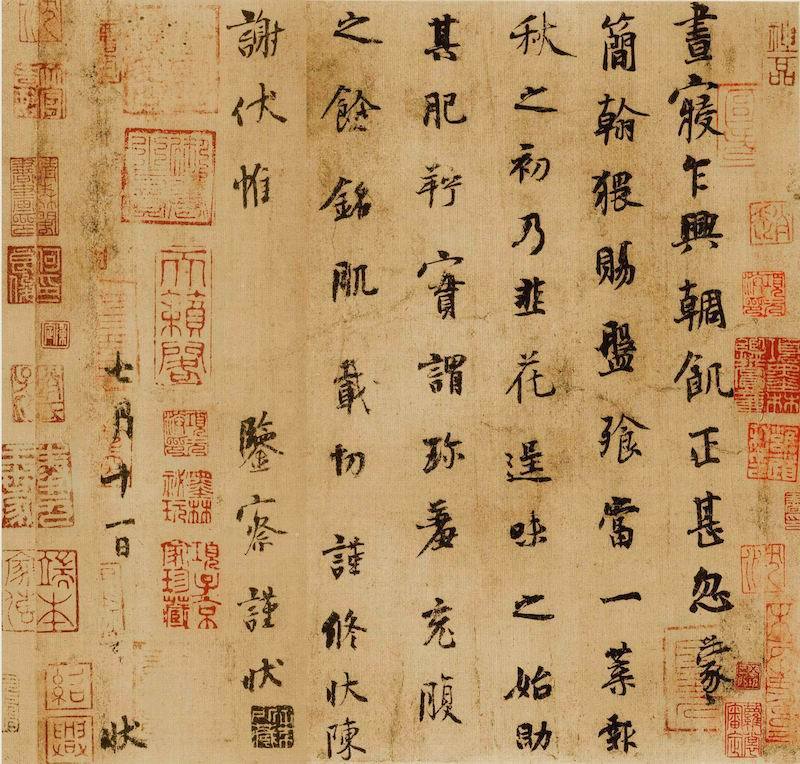
Luo Zhenyu's collection
There are currently three extant copies of "Chive Flower Post." One is from Luo Zhenyu's collection, and only a collotype reprint exists; the second is from Lin Boshou's Lanqianshan Pavilion collection, which was once owned by Gao Shiqi in the early Qing Dynasty; the third is from the Qing Palace collection, which was once engraved in the "Sanxi Hall Calligraphy Post" and is now in the Wuxi Museum. This post has always been kept in the palace as a treasure for imperial viewing, and was once in the Xuanhe Imperial Collection of Song Huizong and the Shaoxing Imperial Collection of Southern Song. In the Yuan Dynasty, this copy was owned by Zhang Yan, with an inscription by Zhang Yan, and in the Ming Dynasty, it was successively owned by Xiang Yuanbian and Wu Zhen. There is also a theory that during the Qianlong period, a book examiner risked his family's life to replace the original with a copy, the copy remaining in the palace, which is the Qing Palace collection; the original later flowed into the private sector, and was acquired and collected by Luo Zhenyu in the late Qing Dynasty, and its current whereabouts are unknown.
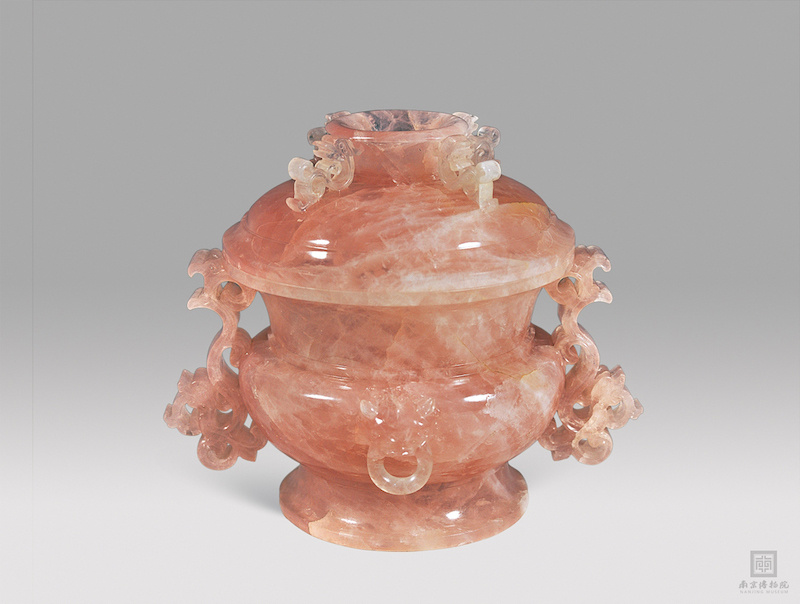
Qing Dynasty Qianlong pink-colored jade censer with dragon-shaped handles
In addition, in this exhibition, the Qing Dynasty Qianlong pink-colored jade censer with dragon-shaped handles is also a very popular star artifact. This censer is carved from a single piece of pink jade, and its entire body is pink, with natural textures of varying lengths and sizes. On both sides of its abdomen are decorated with coiled dragons and beast-head ring handles, and four small coiled dragons are carefully carved on the top of the lid, lifelike.
Rose quartz is a type of quartz, also known as "pink quartz". It is relatively brittle and easily breaks when polished. Its pink color is crystal clear and often used to create small and exquisite ornaments such as jewelry. Carving a whole piece of rose quartz into such a large object is extremely rare. The overall color of the object is warm and even, with a simple yet elegant design.
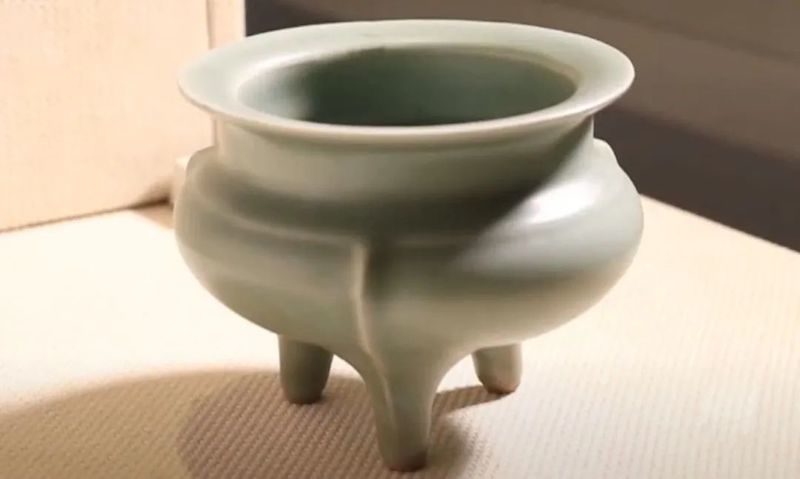
Southern Song Longquan Kiln Meiziqing Li-style Furnace
In the exhibition hall, the "Southern Song Longquan Kiln Meiziqing Li-style Furnace" and the "Qing Qianlong Rose Quartz Panchi Ear-Covered Furnace" complement each other. The two artifacts are similar in size and both have antique designs. The Southern Song Longquan Kiln Meiziqing Li-style Furnace is made in imitation of the bronze Li style of the Shang and Zhou dynasties, popular from the Song to the Ming dynasties. It is entirely glazed with a light, elegant, and warm glaze, like the first green of plums. Its simple and elegant design gives it a sense of stability. This artifact and the Qing Qianlong Rose Quartz Panchi Ear-Covered Furnace are known to the public as the "small pink furnace" and the "small green furnace," becoming a "couple" in the eyes of netizens.
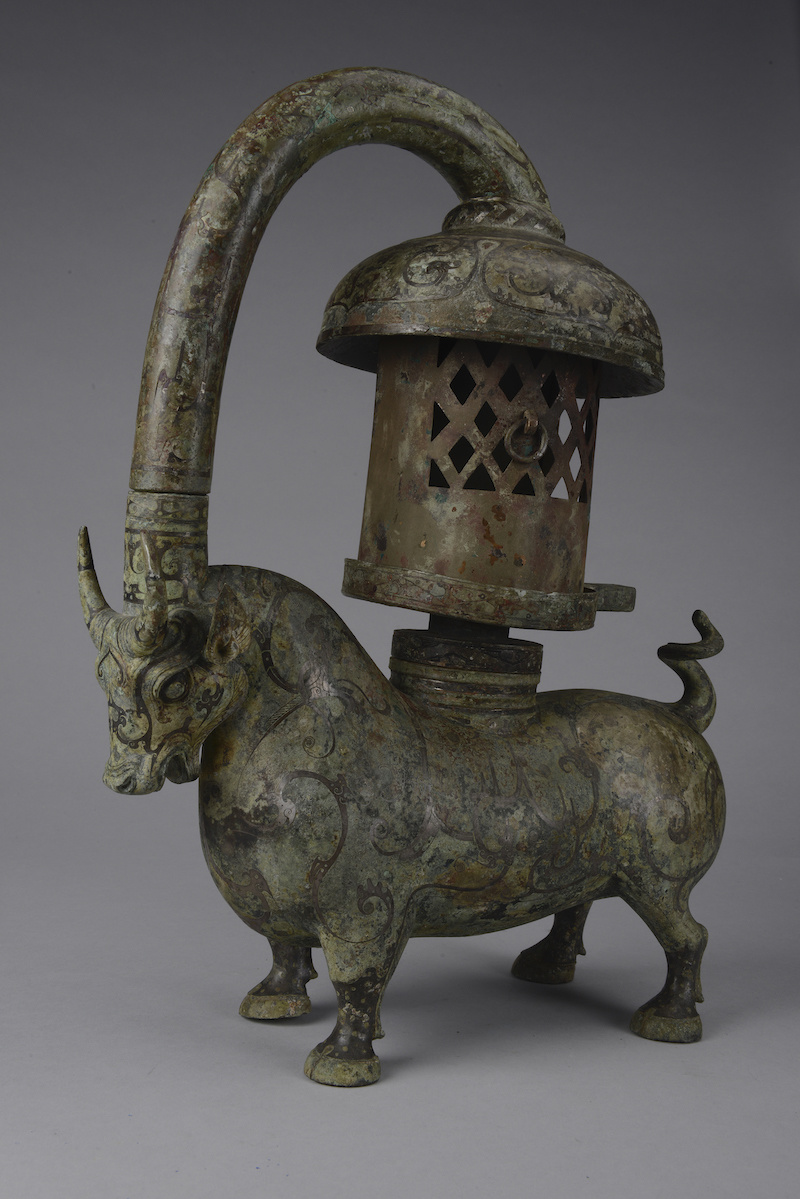
Early Eastern Han Dynasty Silver-Inlaid Bronze Ox Lamp
The Early Eastern Han Dynasty Silver-Inlaid Bronze Ox Lamp is divided into four parts: the base, the tray, the shade, and the cover, which can be disassembled. The base is in the shape of a standing water buffalo, with a plump body, short legs, and a strong build. Its belly is hollow, and its head is in a downward-looking posture, with erect ears, wide eyes, an open mouth, and an upward-curving tail. A cylindrical hole in the center of its back holds a round tray with a handle. The shade and cover, as well as the tray and shade, can be moved left and right to adjust the direction of the light. The shade consists of two semicircular cylindrical tubes. Circular rings are attached to the middle of the outer wall for easy movement. A rectangular oblique square grid is perforated in the center of the wall. The cover is bowl-shaped, with a curved circular tube at the top leading to the top of the ox's head. A dragon's head is decorated on the back of the cover. Except for the shade, the entire lamp is inlaid with silver, with finely crafted decorations, a vivid shape, and an ingenious design. During the transition between the two Han dynasties, Jiangsu, particularly Xuzhou and Yangzhou, the hometowns of Liu Bang, developed rapidly, with a highly prosperous economy and handicraft industry, laying the foundation for Jiangsu's long-term prosperity. This bronze ox lamp is a masterpiece that combines the rich imagination and exquisite craftsmanship of the Han people.
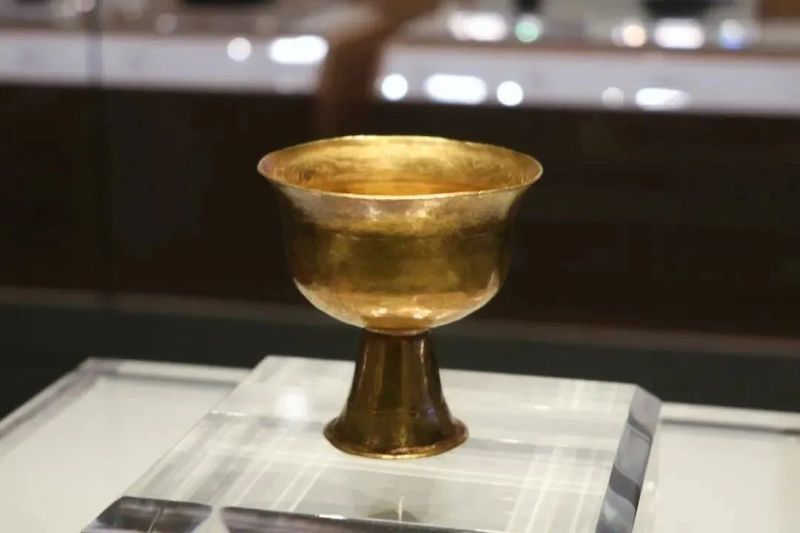
Yuan Dynasty Gold Cup with "Shuang Wan Silang" Mark and "Continuous Birth of Noble Sons" Pattern
The Yuan Dynasty gold cup with the "Shuang Wan Silang" mark and the "Continuous Birth of Noble Sons" pattern brings to mind Li Bai's line, "When life is good, one must enjoy it to the full; do not let the golden goblet stand empty facing the moon." In the center of the cup is a "Continuous Birth of Noble Sons" picture: a child holding a lotus stalk in his left hand and raising his right hand high to support the stem. He smiles happily, playing, surrounded by lotuses. The whole picture is lively and interesting, embodying people's good wishes for life.

Qing Dynasty Mid-Period Cloisonné Enamel Gilded Incense Burner with the Auspicious Symbol of Elephants
The Qing Dynasty mid-period cloisonné enamel gilded incense burner uses the cloisonné enamel technique, a metalworking technique introduced to China during the Yuan Dynasty and reaching its peak during the Jingtai reign of the Ming Dynasty. The design of this incense burner is inspired by the "elephant carrying a treasure vase," symbolizing "peace and prosperity," implying peace, harvest, and good fortune. In Chinese culture, the "elephant" is often regarded as an auspicious beast and a symbol of longevity, so this incense burner also carries auspicious and beautiful meanings.
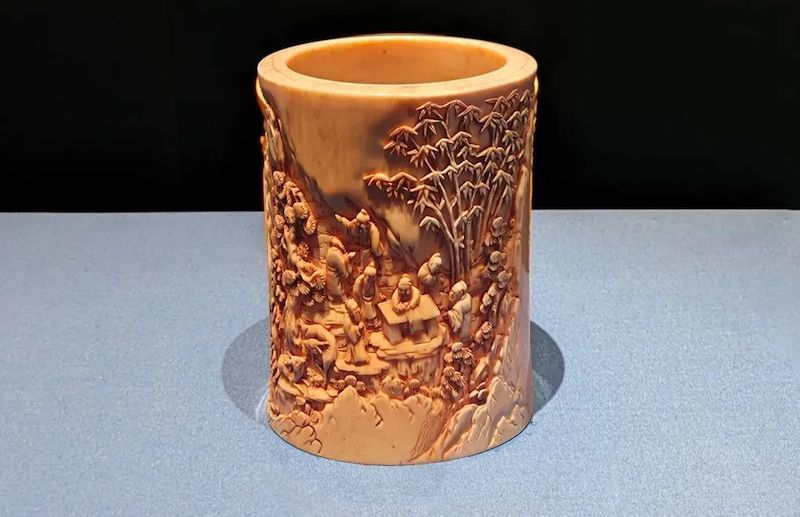
Qing Dynasty Ivory Carving of the Seven Sages of the Bamboo Grove
The Qing Dynasty ivory carving of the Seven Sages of the Bamboo Grove is a treasure for study. This brush holder is made of ivory, imitating the deep and shallow relief method of the Jiangnan Jiading school of bamboo carving. It depicts the scene of the seven sages playing in the green pines, grass, and bamboo forest in a deep mountain courtyard, representing the pinnacle of Suzhou ivory carving.
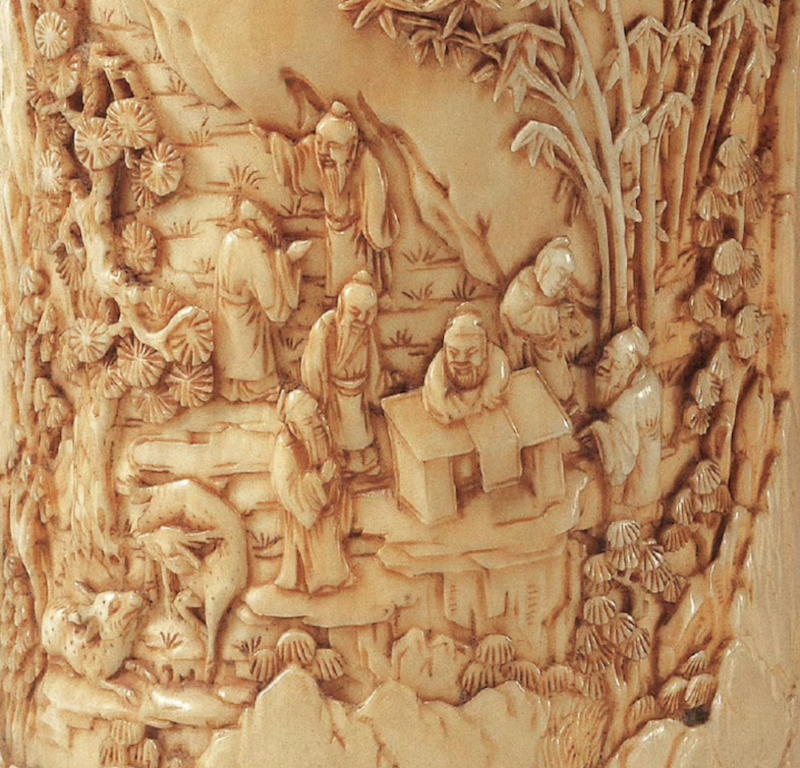
Qing Dynasty Ivory Carving of the Seven Sages of the Bamboo Grove
The Seven Sages of the Bamboo Grove depicted are seven "eminent figures of the bamboo grove" from the Wei and Jin dynasties: Ji Kang, Ruan Ji, Shan Tao, Xiang Xiu, Liu Ling, Ruan Xian, and Wang Rong. The characters here are vividly portrayed, showing the unrestrained and transcendent personalities and demeanor of the literati of the Six Dynasties.
In addition, naked-eye 3D, augmented reality (AR), virtual reality (VR), virtual interactive magic walls, and AI digital character interaction are also presented in the exhibition hall. Excellent exhibitions from the three leading museums—Nanjing Museum, China National Museum of History, and Jiangsu Provincial Museum—have been moved to the Xuzhou Museum's exhibition hall. Visitors can experience "Jade Illuminates China—A Ten-Thousand-Year Epic of Chinese Jade," "Central Plains—The Splendid Tang Dynasty Luoyang City," "Roman Cities and Empire—Ancient Roman Relics from the British Museum," and nearly 30 other excellent exhibitions through VR, and a 5G immersive experience space of the Grand Canal has also been created, allowing visitors to see "all the exhibits in one museum." The exhibition will run until March 5.

